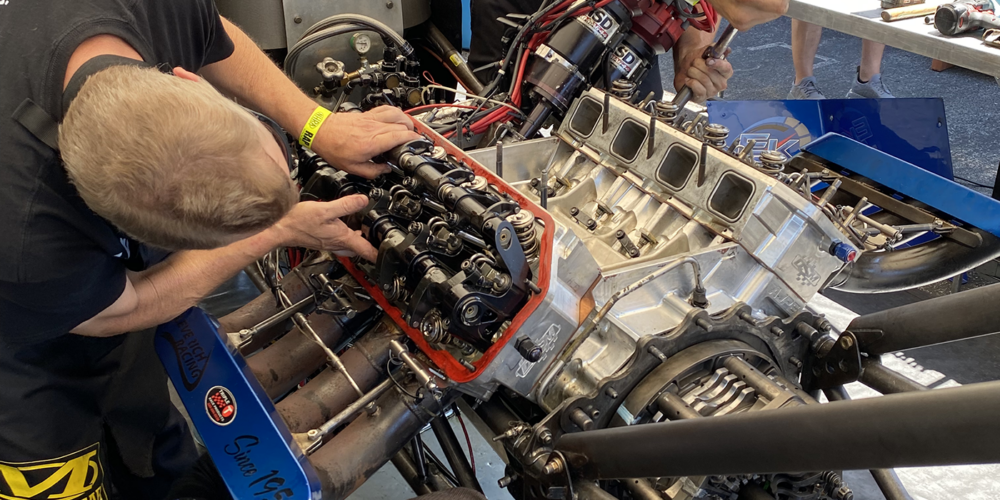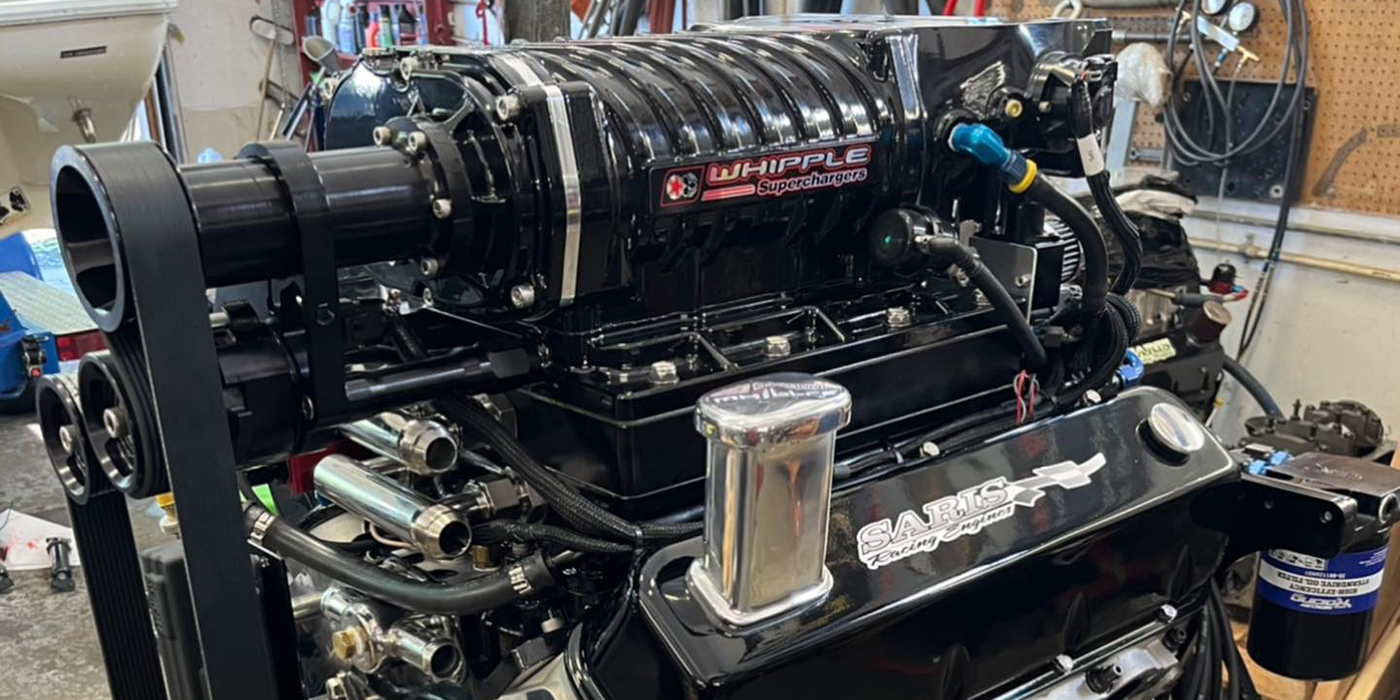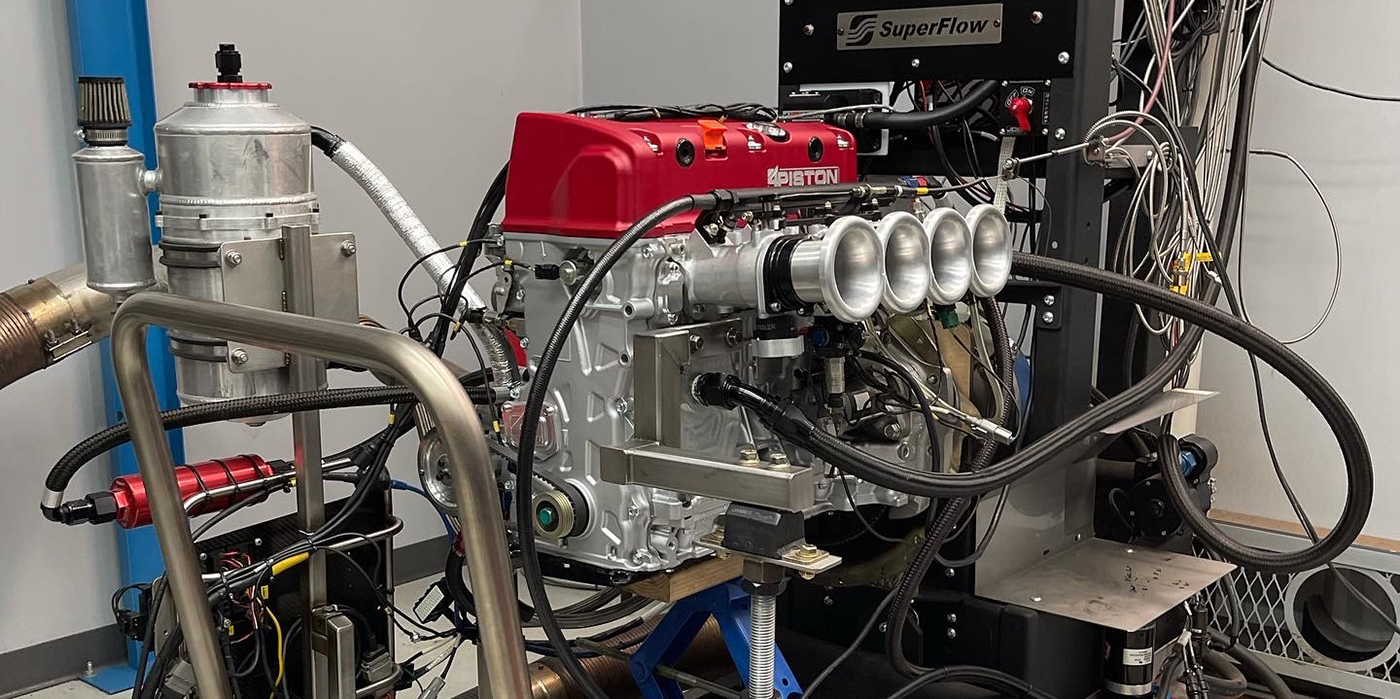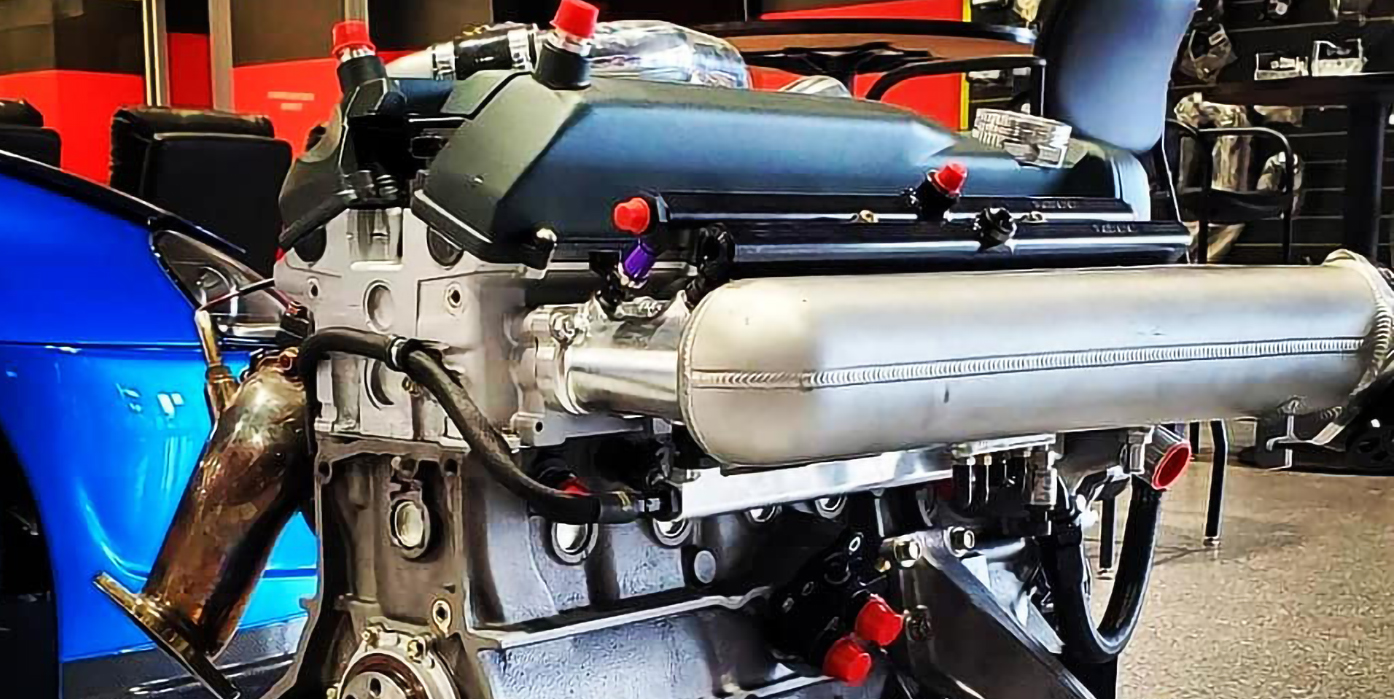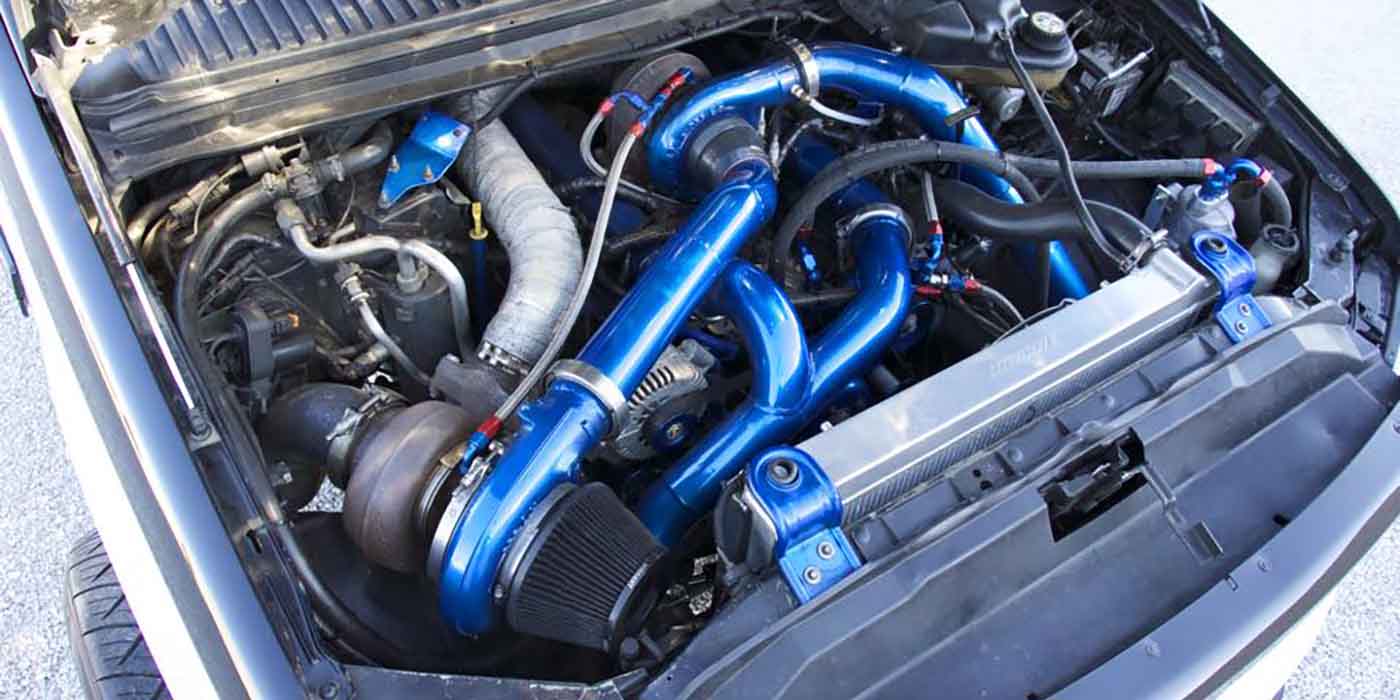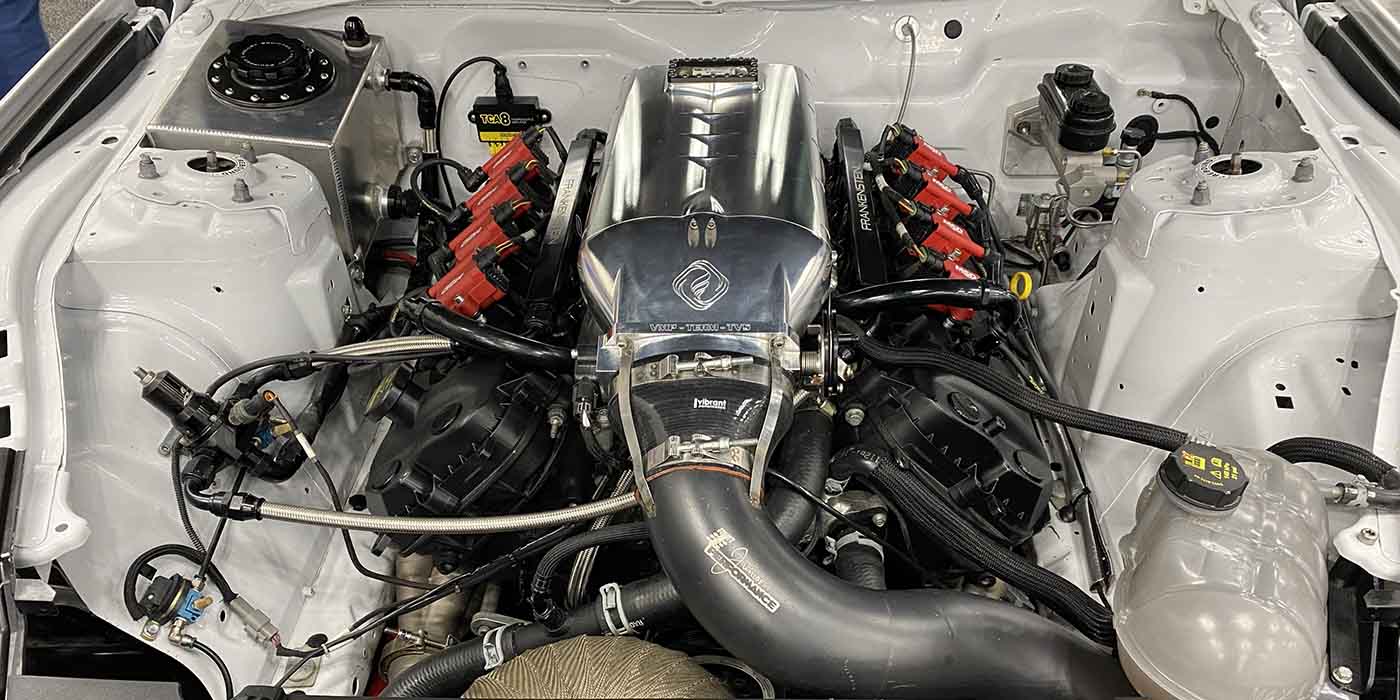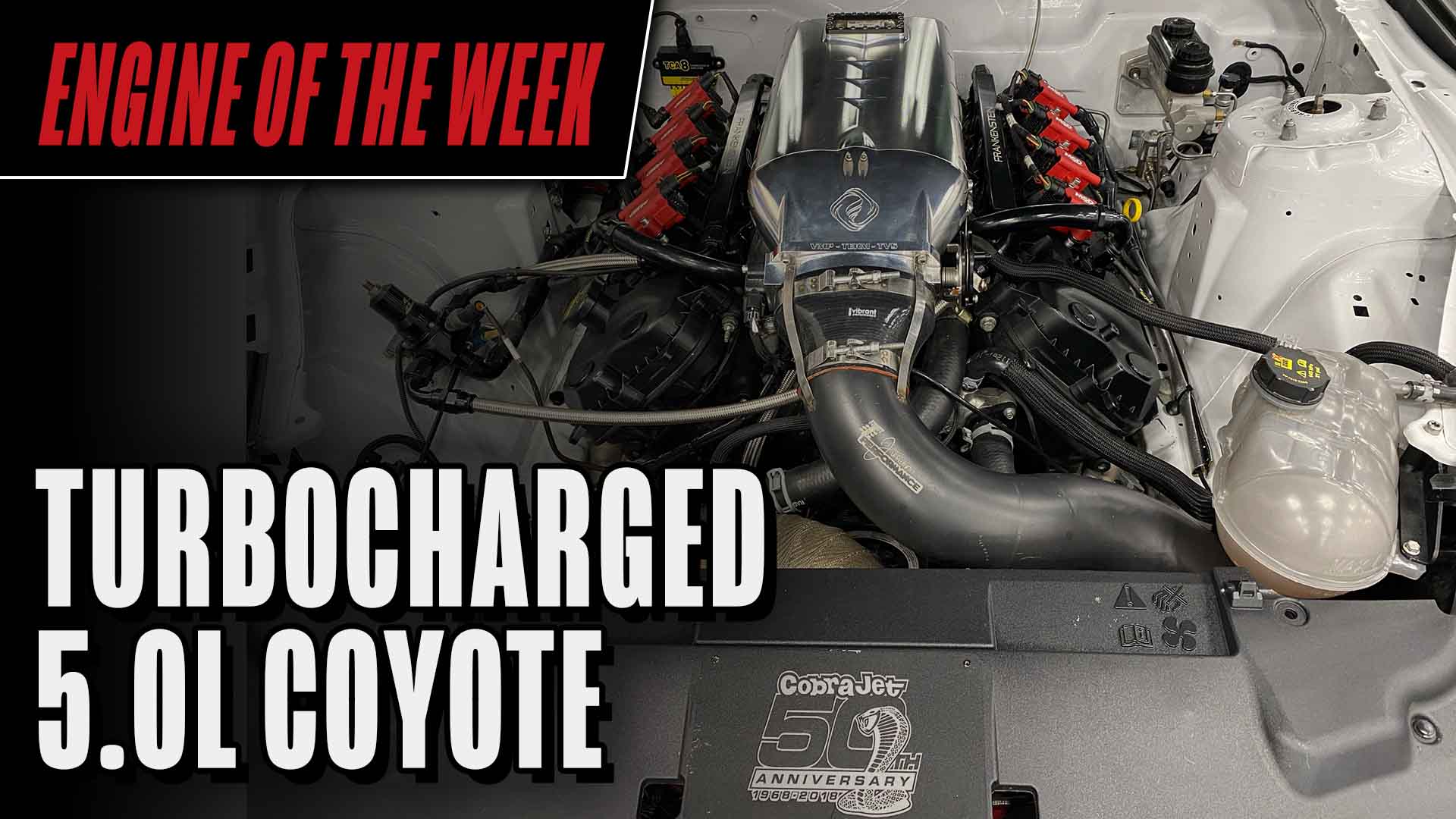It’s a given that engine builders often combine components in innovative and unusual ways. That goes for their shop operations in general. Tim Anderson of T&A Performance LLC in Sparks, NV, is a prime case in point.
Shown here is the buildup of a 6.0L Power Stroke, modified not only to improve performance by more than doubling the power output, but also address some inherent problem areas of the engine. Looking at the project overall, Anderson started out by enhancing the airflow with a bigger VGT turbo, along with changes to the fuel system, replacing heat exchangers for the EGR and oil cooler, and fitting exhaust valves and pushrods from a 6.4L Power Stroke, plus upgrades to the injectors, and rotating assembly.
“We eliminate weak areas,” Anderson notes. That’s essential, in view of the engine’s application in an ’05 Ford Excursion that’s driven hard in remote areas of northern Nevada and the High Sierras, and towing across country as well. “It’s got to last a long time, for durability. It’s a good solid runner.”
Before digging further into the details of the engine buildup, however, it’s interesting to see how Anderson’s approach fits in with his diesel shop operations in general. While most of his customers come in for service, repairs and upgrade work on diesel rigs used in mining, agriculture and municipal applications, he’s found that in the process of fixing drivetrains, he often upgrades them with various aftermarket parts. So he’s combining those two aspects to ensure that he keeps his customers on the road – and keeps them coming back for future work as needed. He likes using the best of both worlds – OEM and aftermarket – to address problems and increase longevity.
Related to that is an ongoing emphasis on staying emissions-compliant with any drivetrain mods. Commenting on EPA-prohibited mods, “If you’re deleting DPFs, it’s going to catch up with you eventually,” he says. “I work on these trucks like they’re my own.”
Anderson points out that if shops and customers keep removing DPFs, that doesn’t leave a market for high-performance DPFs. “But if we force the issue by pushing for more power while keeping it legal, that will encourage research and development. We need to address this important area and encourage legal changes in the industry,” he adds.
As a result of his emphasis on high-quality, street-legal work, T&A Performance has developed a following of diesel customers hailing from almost every state west of the Mississippi – and even some from back East. Being located near the busy I-80 corridor that runs through Reno is certainly a factor in his broad reach, but Anderson is modest about his own contributions to his company’s reputation and far-ranging clientele.
“I couldn’t do it without the crew that I have. I surround myself with good people. But it’s extremely hard to find good mechanics, let alone diesel mechanics,” he admits.
His firm started out part time back in 2006, working out of the garage at his house, while he was working as an equipment mechanic on a diverse fleet of municipal, police and construction vehicles. While there, he honed his skills handling all sorts of mechanical problems. But in his spare time, he soon realized that he had enough customers to establish an independent facility in Sparks, only a few minutes outside of Reno. He now has a staff of several mechanics, along with professional office managers who keep all the paperwork in order, plus put a friendly face on customer relations.
As noted, most clients come in for routine service on all major brands of diesels, but Anderson often handles three problems in particular on the 6.0 Power Stroke: the factory head fasteners, the EGR and oil coolers. The factory units get clogged, and when they fail, he’s seen them emit what he calls liquid cement. Or the oil overheats and melts all the plastic parts in the engine.
He offers a few different solutions. One is a coolant filter system of his own design, and he also installs BulletProofDiesel’s heat exchangers for both the oil and EGR coolers. In addition, the factory torque to yield head fasteners are replaced with ARP fasteners.
As mentioned at the outset, these items were included in buildup of the ’05 Excursion’s 6.0L Power Stroke, which came into his shop with excessive coolant system pressure and a restricted oil cooler, along with other issues in the injectors and substandard aftermarket head gaskets that had failed.
As he’s found with so many other customers, those repairs led to adding a number of aftermarket components that would help prevent future problems (and obviously benefit the bottom line, too). Also, this particular customer “likes to play,” as Anderson puts it, so he went with bigger boost from a 66mm, 2.6 turbo from Barder Turbo Service. This company claims that its unit works well with injectors ranging from 175 to 205 cc, so Anderson met them in middle with Swamp’s Diesel Performance 190cc injectors (measuring 30 percent over nozzle). “They’re not super big, like you see on drag trucks, but they’re good for a hot street truck, with minimal smoke. That’s an important aspect at our higher elevation.”
These changes led to making a number of other changes as well, such as bolting in ARP’s CA625+ head stud kit, to keep things buttoned down tight, since the engine has the capability to go upwards of 50 pounds max boost. Changes to the reciprocating mass included Mahle ceramic-coated pistons for thermal protection. They are de-lipped to reduce cylinder pressure, and fly-cut for valve clearance, and also coated on the skirts with a dry film lubricant to reduce friction and increase longevity. R&R supplied billet-steel connecting rods, torqued to 65 lb. ft., and balanced to a tolerance within a half gram.
Increasing both fuel delivery and airflow required modifications to both aspects. For freer breathing, there’s a S&B Power Stroke Cold Air Intake, and Anderson had Nasty’s Engines do the machine work for larger 6.4L valves, actuated by a Colt Cams billet Stage 3 bumpstick. A high-flow exhaust manifold from BD Diesel dumps out the spent gasses.
As for the fuel system, replacing the undersized factory fuel system is a Driven Diesel Bowl Delete Regulated Return Fuel System Kit. Driven Site provided its Adrenaline High Volume HPOP cast-iron unit, replacing the weaker cast-aluminum factory piece. This kit included the Adrenaline High Volume HPOP cast-iron unit, replacing the weaker cast-aluminum factory piece. This was an early build-date Excursion, so instead of the later version, it had the MY ‘04.5 weak and problematic, cast-aluminum HPOP which was converted to the later ‘05-07 HPOP system.
A FASS unit (200 GPH Flow Rate 55PSI Titanium Series) eliminates air bubbles in the fuel system, which would otherwise reduce the lubrication effect of liquid fuel. That’s why Anderson recommends the FASS for all diesel trucks. Also, air in the diesel has another negative impact by eliminating the “fluid dampening” effect (called the “check impact”) of fuel on the injector plunger. Fluid trapped between the tip and the check at the end of the injection acts as a shock absorber, minimizing check impact that could lead to tip failure.
This scenario can escalate to a couple of bigger problems: cavitation and pre-combustion. Cavitation wear results when air bubbles violently compress under high pressure, producing forces strong enough to tear apart metal.
In addition, just as the piston in the cylinder of a diesel engine produces compression ignition, so too can this combustion event occur at much smaller scale in an injector. A mixture of fuel and air can be ignited by the force of the injector plunger before it even enters the cylinder, hence the term “pre-combustion.” That’s obviously not the right place for diesel fuel to ignite.
While the list of all the upgrades on this 6.0L Power Stroke is more extensive than we have space to cover, a word or two is in order on the transmission. As the power goes up on the engine, so does the need for a stronger drive train. Anderson relies on ATS for a variety of transmission components, such as torque converters and flex plates. Being extra thorough, “We balanced the rotating assembly with the damper on the crank and the flex plate on as well,” Anderson notes.
At the end of the day, though, it’s not just about taking good care of customers and making a profit, as Anderson gives back to the community as an instructor for diesel tech classes at a local vocational college. “It’s rewarding to pass on knowledge,” he says. “I look for kids with a good aptitude, and teach them about the real world.” All of which makes for an ideal mix. ν
EDITOR’S NOTE: Reference to specific components used in this build does not constitute endorsement by Engine Builder magazine. For suppliers of engine components and machining equipment, use the exclusive interactive online Buyers Guide resources at www.enginebuildermag.com.





